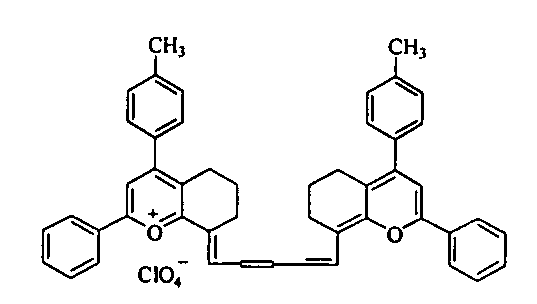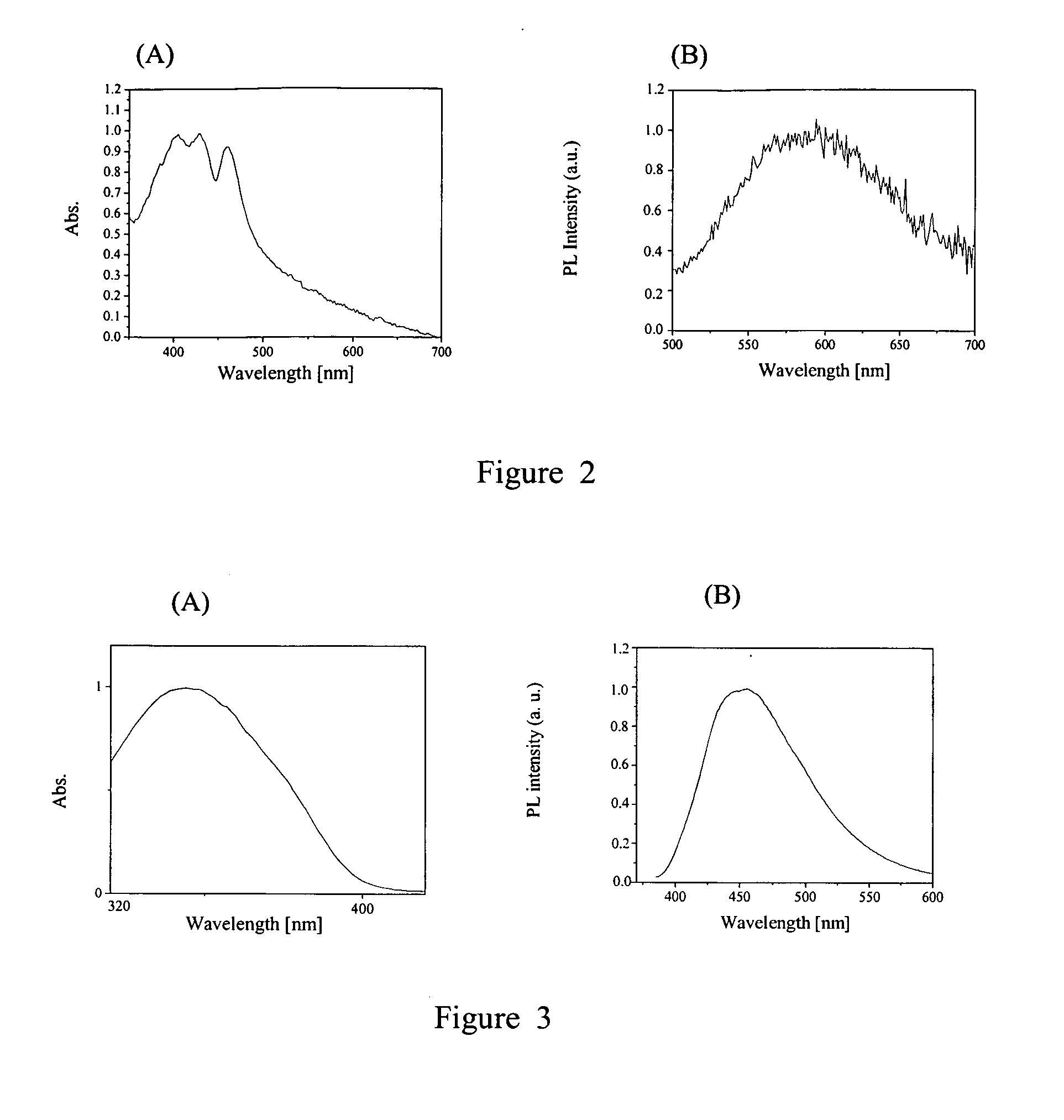Method of bioimaging using nanocrystals of fluorescent dyes
a bioimaging and fluorescent dye technology, applied in the field of bioimaging, can solve the problems of increasing the cytotoxicity of the preparation, and generally hydrophobic and therefore poorly soluble in water, and achieve the effects of convenient spectral range, high quantum yield, and convenient spectral rang
- Summary
- Abstract
- Description
- Claims
- Application Information
AI Technical Summary
Benefits of technology
Problems solved by technology
Method used
Image
Examples
example 1
[0048] To illustrate the invention, water dispersions of two hydrophobic dyes, 1,1,4,4-Tetraphenyl-1,3-butadiene (TPB) and Perylene were prepared and used for bioimaging as described below.
[0049] 1,1,4,4-Tetraphenyl-1,3-butadiene (TPB) and Perylene (FIG. 1) are hydrophobic compounds and are therefore difficult to fabricate as nanoparticles in aqueous dispersion. However, we have successfully used this preparation method to produce TPB and perylene nanocrystals water dispersion.
[0050] Briefly, 200 μl of dye acetone solution (10 mM concentration ) was injected into magnetically stirring water (10 ml). The average size of nanoparticle was estimated to vary from 50 nm to 200 nm depending on the concentration of original organic solution and water temperature. A homogenous dispersion of the dye nanocrystals without any noticeable aggregation or clumps was produced. Optical properties of the prepared nanocrystals were studied using UV-Visible and fluorescence spectroscopy. UV-visible ab...
example 2
[0052] This example demonstrates the variation of nanocrystal size with concentration of the dye. For this experiment, perylene was dissolved on DMSO at 1 mM, 10 mM or 100 mM. The nanocrystals were prepared as described in Example 1 by adding to water at 4° C. or 80° C. As shown in FIG. 6, the size of the nanocrystals was observed to increase with increasing concentration of perylene. The size of the nanocrystals was also greater at the higher water temperature. Additionally, at the higher water temperature, the nanocrystals size distribution showed certain amount of polydispersion.
example 3
[0053] This example describes the preparation of polymer doped nanocrystals. An infrared emitting dye (D1 ) and a two photon excitable fluorescent dye (BT101) were used as illustrative dyes.
[0054] The infrared emitting dye D1 (FIG. 7A), shows fluorescence around 1.1 to 1.35 μm in organic solvents, but is significantly quenched in aqueous media. Two photon excitable fluorescent dye BT101 (FIG. 7B), has a polar D-π-A structure, in which the π-system is end-capped by an electron donor (D) and an electron acceptor (A)[2]. This structure is one of the most effective molecular models for both second- and third-order nonlinear optical materials, thus BT101 has great potential to be suitable for two-photon imaging. However, as with D1, BT101 lacks the necessary solubility properties to have application for biological systems.
[0055] The two-photon excitable fluorescent dye (BT101) was synthesized as reported by Lin et al. [2] . . . Poly (D,L-lactide-co-glycolide) (50:50) (PLGA) and polysty...
PUM
| Property | Measurement | Unit |
|---|---|---|
| Fraction | aaaaa | aaaaa |
| Fraction | aaaaa | aaaaa |
| Size | aaaaa | aaaaa |
Abstract
Description
Claims
Application Information
 Login to View More
Login to View More - R&D
- Intellectual Property
- Life Sciences
- Materials
- Tech Scout
- Unparalleled Data Quality
- Higher Quality Content
- 60% Fewer Hallucinations
Browse by: Latest US Patents, China's latest patents, Technical Efficacy Thesaurus, Application Domain, Technology Topic, Popular Technical Reports.
© 2025 PatSnap. All rights reserved.Legal|Privacy policy|Modern Slavery Act Transparency Statement|Sitemap|About US| Contact US: help@patsnap.com



